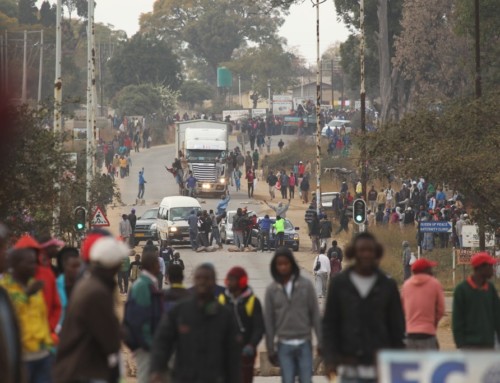
Maersk Container ship. Image credit fleetmon.com
ZIMSEC O Level Commerce Notes: Transport: Containerisation
Containerisation
- Refers to the carriage of goods in standardised large containers (boxes) made of metal.
- The containers are:
- filled with goods ready for transportation.
- They are sealed in the presence of custom officials at the point of loading or dispatch.
- Opened only at the port of destination.
- They are stowed (stacked) before transportation.
- Used in air, rail , road and sea transport.
Advantages of using containers.
- Can be carried cheaply
- Are sealed during transportation at the port of loading therefore goods are safe from theft or damage.
- Can be transported easily from one mode of transport to another e.g. from sea to rail or rail to road.
- Allows the quick turnaround of vessels or vehicles at purpose built terminals.
- May be refrigerated to carry perishable goods i.e. the containers can be modified to carry specialised cargo.
- They are collapsible when empty thus making it easier to transport them and save space.
- More space can be saved since they can be stacked when filled with goods.
- They minimise customs checks at border entry points since they are sealed in the presence of customs officials.
- They protect goods from deterioration due to bad weather.
- They marked/numbered for easier identification.
- They can be grouped by traer or type of good thus saving time.
- Traders can combine to fill a container which is much easier to do than fill a whole ship.
- It allows goods to be stored more easily.
- They speed up the movement of goods.
- They allow the use of cranes and forks i.e. mechanise handling thus:
- speeding up the loading and unloading as well as
- reducing the cost of loading and unloading.
Disadvantages of containers.
- Containers:
- require special handling equipment which can be expensive to hire.
- Are not ideal for small loads since they can be expensive.
- Are expensive to hire or buy.
- May lead to unemployment at ports due to mechanisation.
- May be costly where there are no return loads.
- Some towns or cities are not ideal for use as container terminals.
- They may require the rebuilding of terminals and docks.
- Large amounts of capital are required to build ports that can handle containers.
- There may be bottlenecks at ports if they are not cleared quickly or if there is a breakdown.
To access more topics go to the Commerce Notes page.




